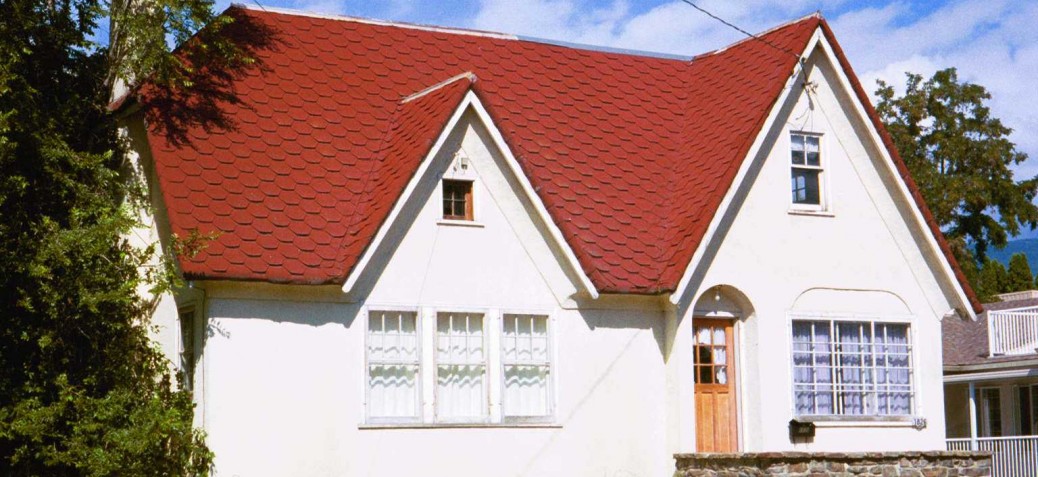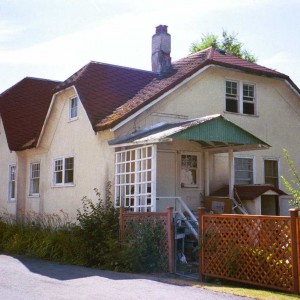Burnham House
Place Description
The Burnham House is a one and one-half storey, stucco-clad wood-frame cottage style residence, notable for its picturesque and complex roofline. It is situated mid-block amidst other residences of a similar age and scale, in the Marshall Street Heritage Conservation Area.
Heritage Value
Constructed in 1930, the heritage value of the Burnham House is associated with its picturesque, cottage style architecture. The popularity of traditional period revival styles during the interwar years illustrates the reluctance to relinquish historical references in domestic architecture. Homeowners of the period understood and found comfort in traditional, historically referenced architecture, yet appreciated the domestic comforts of the modern home. This charming house is an example of the work of prominent local developer and contractor, Hector Maranda (1879-1967), who was responsible for a number of similar houses in the area.
Additionally, the Burnham House is significant for its associations with its original owner John Lawrence Burnham, (1870-1951), and his wife Isabella Maria Burnham (1871-1946). John Burnham worked as an agent for the Canadian Pacific Railway at a time when railway expansion was having a significant impact on Kelowna.
Character Defining Elements
Key elements that define the heritage character of the Burnham House include its:
- location mid-block with east facing orientation;
- residential form, scale and massing as expressed by its one and one-half storey height (with basement) and rectangular plan;
- complex roofline with parallel jerkin-headed roofs, front facing gables of varying height and original red, hexagonal asphalt shingle roof covering;
- wood-frame construction with plain, smooth stucco cladding and rounded, coved eaves;
- picturesque cottage style elements such as the use of jerkin-headed roofs, wrapped roof edges, arched inset above front window, round arched front entry, scored foundation, and two stucco-clad chimneys (one external and one internal); and
- asymmetrical fenestration: single, double and triple-assembly 6-over-1 and 4-over-1 double-hung wooden-sash windows, 15-pane front window, 9-pane north elevation window, and four-pane window in front gable.





